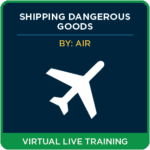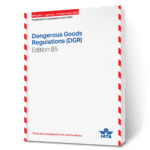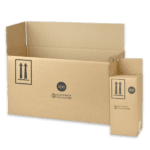
Net Quantity Requirements
When shipping by air, using the IATA Dangerous Goods Regulations, one of the requirements is to add the Net Quantity to the outside of your package. Let’s look at the actual requirements.
What is Net Quantity?
IATA defines NET QUANTITY as either:
(a)the weight or volume of the dangerous goods contained in a package, excluding the weight or volume of any packaging material or
(b)the weight of an unpackaged article of dangerous goods (e.g., UN 3166)
For the purposes of this definition, “dangerous goods” means the substance or article as described by the proper shipping name shown in Table 4.2, e.g., for “Fire extinguishers,” the net quantity is the weight of the fire extinguisher. For articles packed with equipment or contained in equipment, the net quantity is the net weight of the article, e.g., for “Lithium-ion batteries contained in equipment,” the net quantity is the net weight of the lithium-ion batteries in the package.
The requirement for Net Quantity displays a “pointed finger,” indicating that this requirement is more restrictive than ICAO (International Civil Aviation Organization)
The requirement for Net Quantity is found in 7.1.4.1(c) General states: the NET QUANTITY of dangerous goods contained in each package must be shown. Where the maximum quantity shown in Column H in Subsection 4.2 is a gross weight, the GROSS WEIGHT of the package must be shown with the letter “G” following the unit of measure. This quantity must be marked adjacent to the U.N. number and Proper Shipping Name required by (a), above.
The requirement does not apply to:
- consignments of only one package with dangerous goods contents;
- consignments of multiple packages with identical dangerous goods contents (i.e., each package with the same U.N. number, proper shipping name, packing group, and quantity);
To my way of thinking, the confusion comes in with the “exception” they provide by saying that the “requirement does not apply to.” Every day, shippers send out multiple packages to various consignees with various contents. It seems to me that remembering when the Net Quantity requirement is required and when it is not a mistake waiting to happen.
My advice is to always mark your package with the Net Quantity (or Gross weight if applicable). This way, you never forget!
A few additional notes:
When shipping dry ice, you always require the Net Quantity of Dry ice.
Do not use different wording like “Net Contents.” This could result in your package being refused.
Gross weight is required when the “G” is shown in the List of Dangerous Goods, column H.
The 65th Edition of the IATA Dangerous Goods Regulations is now available, order your copy today. Don’t forget we offer Virtual-live training courses on the IATA Dangerous Goods Regulations. These courses have a living, breathing instructor, with a wealth of knowledge to share. Our team of experts is just a call away for our customers at 855.734.5469 or send us an email, we’re happy to help.
Stay up to date and sign up for our newsletter!
We have all the products, services and training you need to ensure your staff is properly trained and informed.
 Shipping Dangerous Goods Shipping Dangerous Goodsby Air |
 IATA Dangerous IATA DangerousGoods Regulations |
 4G UN Combination Boxes 4G UN Combination Boxes |






